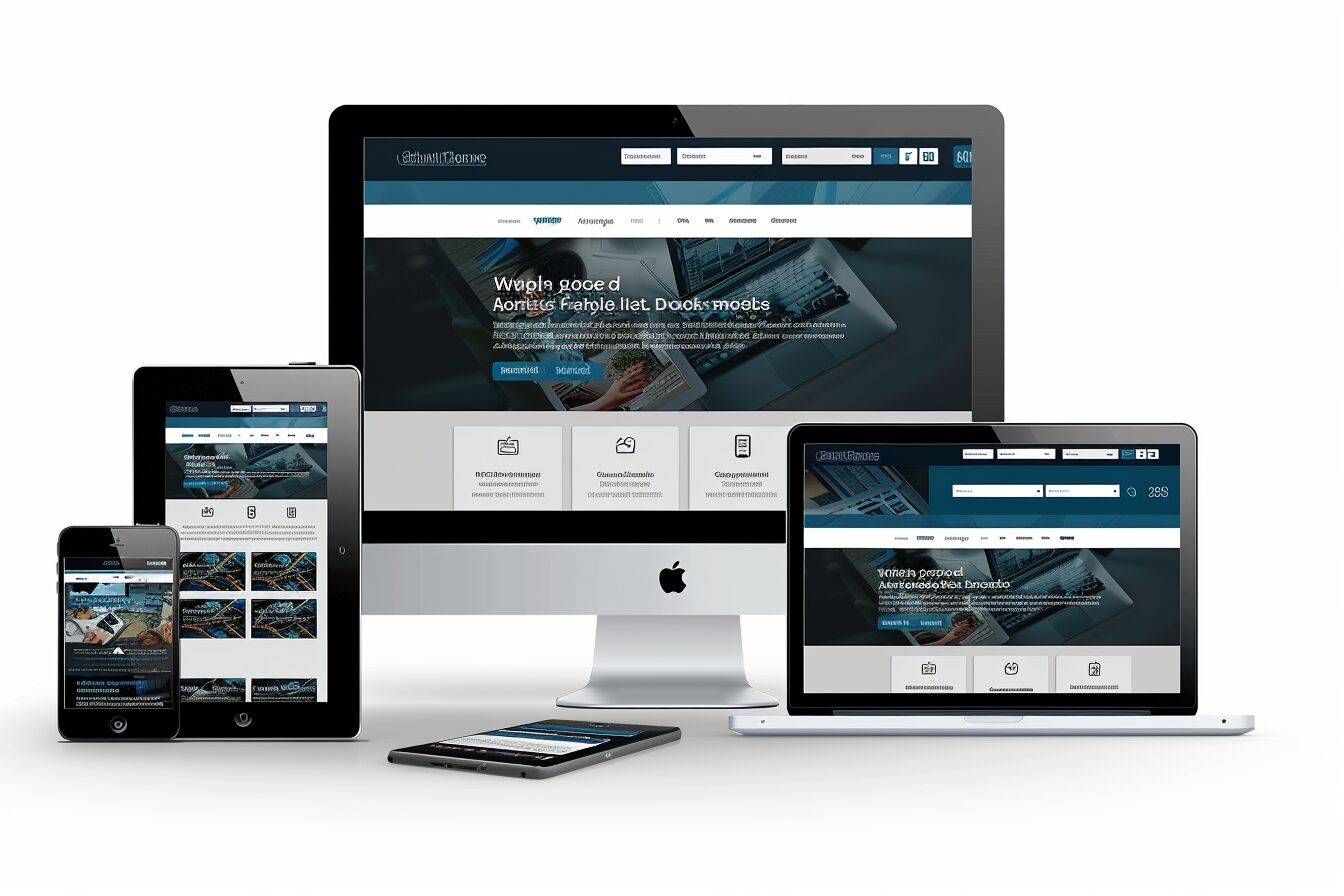Understanding the Importance of Choosing the Right Web Development Tool
In today’s digital era, businesses must have a robust web presence to engage and retain customers effectively. A key aspect to ensuring this lies in selecting the right web development tool. The choice of framework or tool for web development doesn’t just impact the site’s functionality; it plays a significant role in determining the ease of future modifications, site speed, security, and the overall user experience.
A wrong choice can lead to performance issues, higher costs in the long run, poor SEO results, and a disappointing user experience, pushing potential customers away. Therefore, picking a suitable tool is not merely a technical decision but a strategic one, as it can directly influence the success of a business online. The right tool can enable developers to build secure, high-performing websites that create engaging user experiences, leading to higher dwell times, better engagement, and, eventually, higher conversions.
Primer on Web Development Frameworks
Web development frameworks are essentially software platforms that offer a foundation for developers to build web applications. These frameworks provide necessary components such as libraries for database access, templates and session management. They play a crucial role in simplifying web development, reducing the need to write complex code from scratch.
The primary goal of these frameworks is to enable the rapid development of dynamic websites, supporting the development of end-to-end web applications. They follow a specific software design pattern like Model-View-Controller (MVC), which aids in segregating the application logic from the user interface layer. Web development frameworks are a boon for developers, as they facilitate easier and faster creation of robust, scalable, and secure web applications.
• Web development frameworks are an integral part of the web application-building process. They serve as a foundation, providing necessary components such as libraries for database access, templates and session management.
• These software platforms simplify the complex procedure of creating web applications from scratch. They eliminate the need to write extensive code, making it easier and more efficient for developers.
• The primary goal of these frameworks is to facilitate the fast-paced development of dynamic websites. This includes supporting end-to-end web application development that caters to all aspects, from user interface design to backend coding.
• Most web development frameworks follow specific software design patterns like Model-View-Controller (MVC). This approach aids in segregating different sections of an application – maintaining a clear distinction between the user interface layer and underlying logic.
• Developers find these frameworks highly beneficial due to their streamlined functionalities. They speed up creation and ensure robustness, scalability and security within applications.
In conclusion, web development frameworks are pivotal in modern-day programming environments. Their wide-ranging utilities make them indispensable tools for developers aiming at building high-quality, feature-rich web applications efficiently and effectively.
Criteria to Consider When Selecting a Web Development Framework
When embarking on website development, various factors come into play in choosing a suitable framework. The nature of the project is a primary consideration; the complexity and scale of the project will determine the necessity for a heavyweight or lightweight framework. The website’s desired functionality, reliability, and efficiency should guide the selection of a framework with robust capabilities, stability, and good performance. Additionally, time constraints can influence the decision; if the project has a tight deadline, a framework with uncomplicated installation and setup processes could be the best option.
Another essential consideration should be the skills and expertise of the development team. The learning curve of a new framework can delay project completion and increase costs, so it’s vital to consider a framework that the team is familiar with or one that has extensive and understandable documentation. The choice of programming language will also heavily impact the decision, as some frameworks only support specific languages. Coming up with a thorough checklist of these factors before the selection process can save valuable time and resources in the long run and ensure the delivery of a quality final product.
Evaluating the Popularity and Community Support for Various Tools
When venturing into the realm of web development, one of the key factors to weigh is the popularity and community support for the tools you are considering. Popularity is an important metric as it can give you a roughly accurate idea about the tool’s strong reputation, widespread use, and proven reliability. A highly popular tool has likely been tested in many situations and scenarios, and the resulting feedback has been incorporated back into refinements and improvements. That said, taking popularity with a grain of salt is always a good idea because the trends change, and what is popular today might not be so tomorrow.
On the other hand, community support plays an equally crucial role, especially for beginners. A strong community can be a lifeline when you hit roadblocks or encounter issues you can’t resolve independently. An active community will offer quickly accessible resources like online tutorials, discussion boards, and expert forums where you can explore solutions and get help when needed. Moreover, an extensive community often translates into a large knowledge base and rich libraries filled with codes, modules, and plug-ins that can expedite your web development process. Therefore, considering both popularity and community support will help make an informed decision.
Assessing the Learning Curve and Documentation of Different Web Development Tools
The learning curve associated with any web development tool represents the time and effort a developer requires to become proficient in using it. It’s a critical factor to consider when choosing a framework, as it can impact project timelines and the efficiency of the development process, especially for complex projects. Various tools, such as Angular, React, and Vue.js, each come with their own set of challenges and learning curves, and understanding these nuances can help development teams choose the right framework for their needs.
Another important aspect to consider is the quality and accessibility of the tool’s documentation. Comprehensive, well-structured, and regularly updated documentation can go a long way in aiding developers in understanding and making the most of the tool or framework. Excellent documentation is a reliable reference point for troubleshooting, learning new features, and understanding best practices, all of which contribute to a smoother and more productive development process. Tools like Django, Flask, and Ruby on Rails have been praised for their extensive and user-friendly documentation.
Analyzing the Performance and Speed of Various Web Development Tools
The performance and speed of web development tools can make your coding process more efficient. High-performance software can handle more computations and operations in less time, making it an essential aspect when choosing a tool. On the other hand, the speed of a tool is just as essential, especially if a project requires a fast turnaround. It refers to how quickly a tool can execute commands and display or implement changes made in the code.
There are various ways to test performance and speed. Benchmark tests are often used for this purpose. These involve running a series of standard tests on a tool to gauge its performance under different scenarios and operations. Other factors that can affect performance and speed include the complexity of the software, hardware limitations, and network speed. Both performance and speed must be assessed in the context of the project requirements and system capabilities to choose the most suitable tool.
Examining the Versatility and Compatibility of Different Frameworks
Versatility and compatibility are core features to look for in a web development framework. They offer insights into the usefulness and applicability of a framework in different scenarios and for varied projects. A versatile framework is adaptable, catering to diverse project requirements such as responsive design or intensive data management. Moreover, it supports a wide range of features and functionalities that can be added or subtracted based on the requirement.
Conversely, compatibility refers to how well a certain framework blends with different technologies and platforms. This aspect speaks volumes about whether a particular tool can seamlessly work with other tools, technologies or interfaces like databases, APIs, or front-end frameworks. High compatibility insists that the web developers face fewer obstacles concerning integration, and it ensures a smoother development and implementation process, thus playing a significant role in time and resource management in the long run.
Project-Specific Considerations in Framework Selection
Every web development project has its unique set of requirements, objectives, and challenges. Therefore, the choice of the framework should be dictated by the specifics of each particular project. The technology stack, the project’s size and scale, the development team’s composition, and the project timeline are all critical factors that influence the selection. Projects that demand a high degree of customization may need a flexible framework, while simple, small-scale projects could benefit from a more streamlined, boilerplate framework.
Another important factor is the functionality and features that the project requires. A data-heavy website, for example, may require a framework that excels in handling and manipulating large amounts of data. In contrast, a visually rich, user-oriented website may benefit more from a framework designed for creating an impressive user interface. Also, the long-term maintainability of the project and potential future developments should be considered, meaning the chosen framework should not only fit the current needs but be robust enough to support future growth and expansion.
Case Studies: Successful Implementations of Different Web Development Tools
In the vast realm of web development, numerous frameworks hold their unique standpoints. Let’s delve into La Banque Postale’s case, which interestingly chose Drupal as its primary web development tool. Drupal catered to their needs by offering robust security measures, a definite plus for the finance industry. It easily handled complex operations and provided an economical solution, meeting La Banque Postale’s specific requirements. The result was a highly secure, easy-to-navigate website that offered an impeccable user experience.
Another remarkable example is Airbnb, which owes a significant part of its success to React, another popular web development tool. React’s unique selling proposition lies in its excellent speed and usability. Airbnb leveraged these features to build a user-friendly and fast-loading website. The use of React allowed them to construct a dynamic site that could operate seamlessly on various platforms. Consequently, Airbnb could offer an impressive UX to its broad consumer base, enhancing overall customer satisfaction.
Future Trends in Web Development: Staying Ahead of the Curve
The field of web development is dynamic, with new technologies and tools introduced regularly. The last few years have seen a steady surge in the number of JavaScript frameworks, with React and Angular leading the charge. However, what lies in the future is an even more integrated, user-centric approach to web development, with the Internet of Things (IoT) and Artificial Intelligence (AI) poised to make significant impacts. Designing for the myriad IoT devices would require entirely new strategies, while AI could help automate several coding tasks, thus changing the landscape of web development significantly.
In addition to IoT and AI, there is a growing emphasis on Progressive Web Apps (PWAs), which aim to bridge the gap between mobile apps and websites by combining the best of both worlds. With a PWA, users can enjoy the same user experience and functionality on a site as they do on an app but without the hassle of downloading and installing it. This is a trend that holds much promise for the future. Moreover, another trend to watch out for is the use of serverless architectures and microservices, which offer scalable and highly efficient solutions for web development and have the potential to revolutionise the way websites are developed and deployed.










